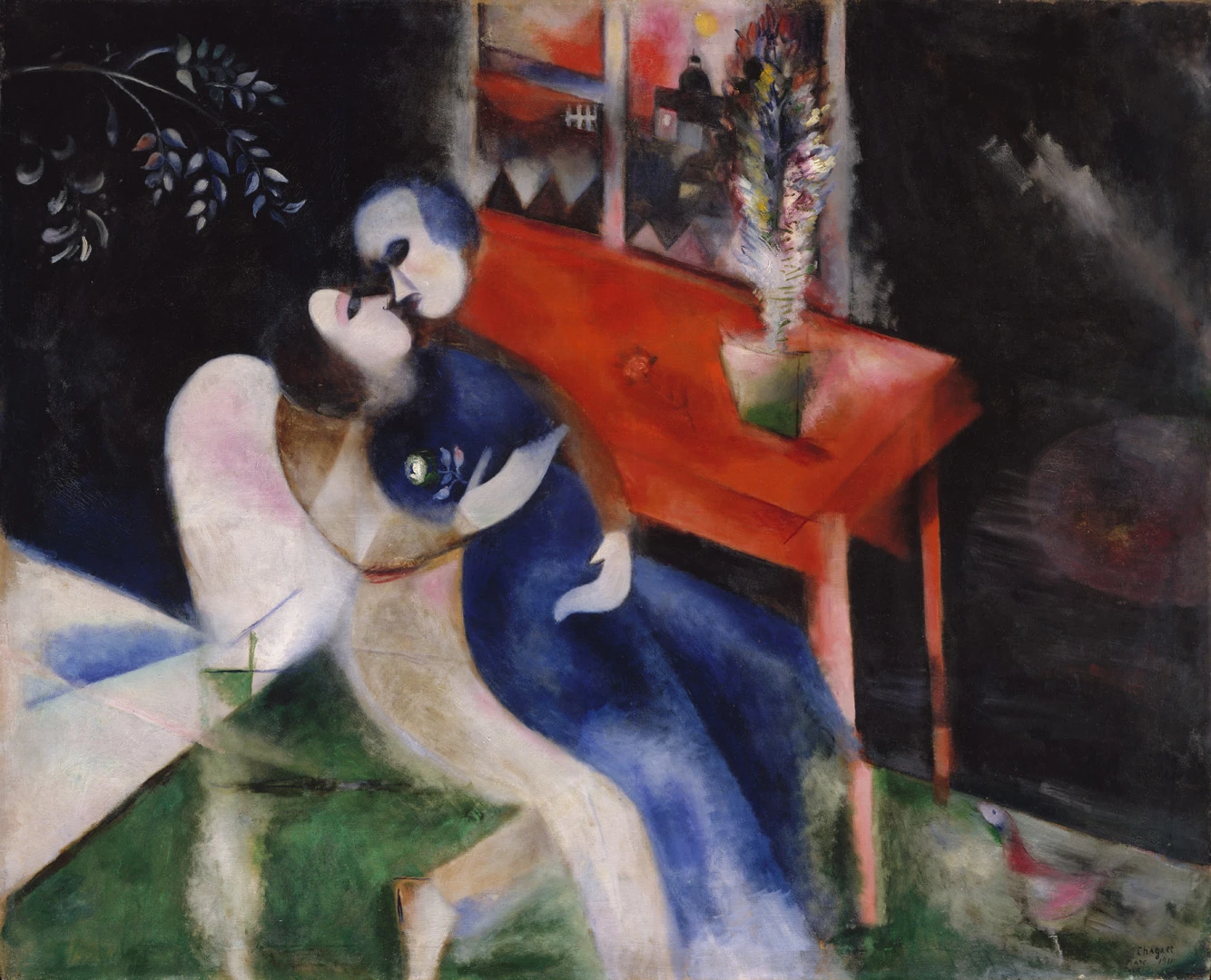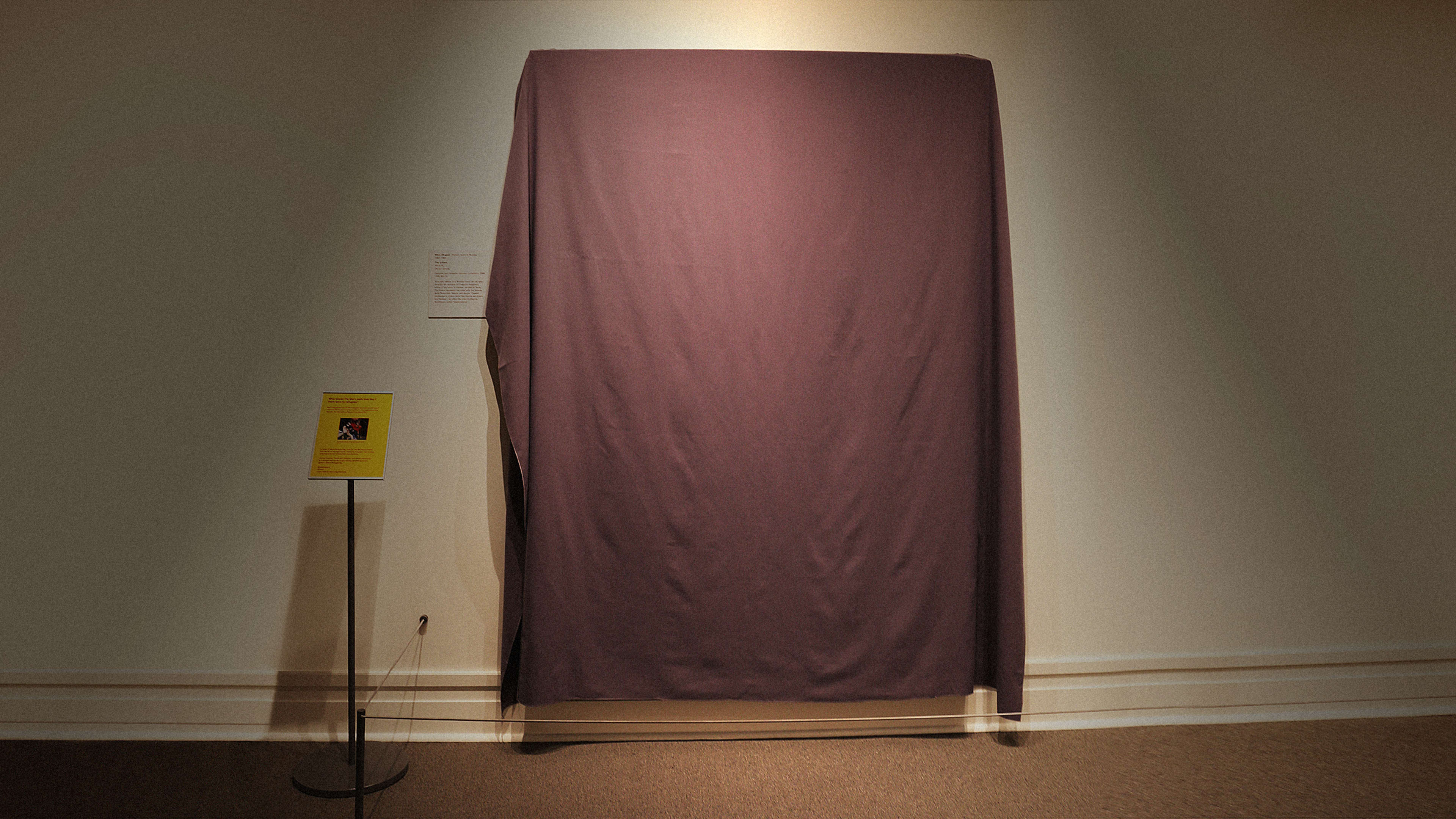The nonprofit International Rescue Committee wants people to envision what the world would lose without the talent and creativity of the world’s growing population of refugees. So they’ve worked with the New York Metropolitan Museum of Art to display French refugee Marc Chagall’s iconic abstract oil painting “The Lovers” at its Fifth Avenue location. There’s just one catch: The entire work is covered up.
That’s one part of a larger museum and multimedia campaign that includes an awareness video with celebrities like Keegan-Michael Key and Lena Headey thanking other refugees for their contributions to society. To name a few, Freddie Mercury, Albert Einstein, and wife and husband duo Margret and Hans Augusto Rey (better known as the authors of Curious George) were all once forced to flee their homes because of conflict and intolerance.
“It’s really one campaign with one message: When we welcome refugees, they shape our world for the better,” says Colleen Ryan, vice president of global communications at the International Rescue Committee in an email to Fast Company. “We’ll track a slew of performance metrics but I would say that the super-ordinate goal is to give people the goosebumps. We want to inspire and connect. Beyond that, we want to get people thinking about the power of welcome and the implications of being a country–a world–that turns it back on refugees and their potential.”
More displaced people than ever remain in need of welcome. According to recent data from the UN, over 70 million people have been pushed into exile through conflict and political upheaval in recent years and remain unable to return home. In 2018, two-thirds of the newly uprooted 13.6 million came largely from Afghanistan, South Sudan, Myanmar, and Somalia, according to a Guardian report. At the same time, the number of resettlement offers worldwide has dropped by half in recent years due to a rise in isolationism and irrational vilification of people forced from their homes.
The Met campaign spans two locations. The Met Fifth Avenue is showing the shrouded Chagall alongside other actually visible works from more artists who were refugees at one point. Those works will be marked with yellow labels and include artists Max Beckmann, Max Ernst, and Piet Mondrian. At the same time, the Met Breuer on Madison Avenue features an exhibition called “Home is a Foreign Place,” with a variety of works that meditate on that theme from Mark Rothko, Ibrahim El-Salahi, and Sopheap Pich. The Chagall will be uncovered after June 20—that’s World Refugee Day—while the “Home is a Foreign Place” installation will continue to run through June 2020.

Spoiler alert: “The Lovers” was completed in 1914 and depicts what the Met describes as “[f]airy-tale details of a Russian town… seen through the window of Chagall’s imaginary scene of his room in Vitebsk, painted in Paris.” The actual lovers in the scene are abstract versions of the painter himself and his fiancée Bella Rosenfeld. Chagall was originally from Russia and Jewish. He fled France for New York after the Nazi invasion in 1940, although he eventually returned.
In response to the growing refugee crisis and continued non-committals from Donald Trump, IRC president and CEO David Miliband just issued an open letter calling for the U.S. to “reverse the current course of denying assistance and safety to refugees and asylum-seekers” and continue the historical precedent of welcoming no fewer than 95,000 refugees to the country this fiscal year.
Recognize your brand’s excellence by applying to this year’s Brands That Matter Awards before the early-rate deadline, May 3.
